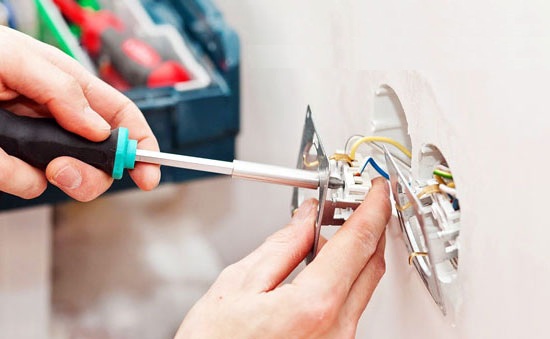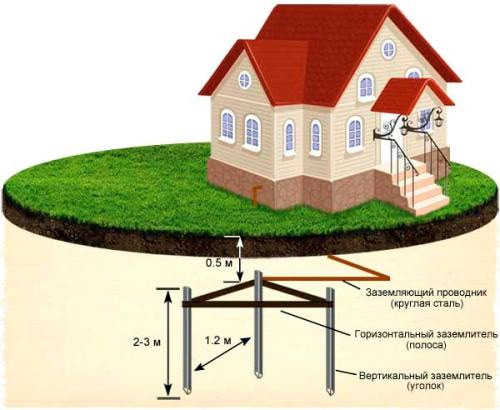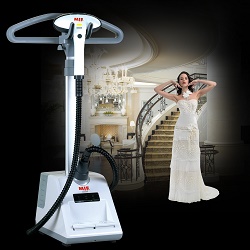Grounding methods for washing machines in different conditions
To get a high-quality and reliable assistant for washing is only half the battle: to safely use a new home appliance, you need to make a proper grounding of the washing machine. Many for this cause the wizard from the nearest service center, we offer to do everything yourself. It is necessary to adhere to a certain technique, which will step by step tell how to ground the washing machine, even if there is no grounding in the apartment.

Content
Recall the theory
Many users do not even think about such a problem as grounding and have been quietly using the equipment for many years, unaware that they put their loved ones at risk of electric shock.Only after receiving a perceptible impact, touching simultaneously to the body of the typewriter and the faucet in the kitchen or in the bathroom, they begin to understand that grounding saves everyone living in an apartment from such danger.
The main reasons for an urgent grounding are as follows:
- Huge risk of getting electrical injury - You can first just feel a slight tingling sensation, but this is already considered a very alarming signal.
- There is an opinion that is confirmed by professional electricians with extensive experience that, in the absence of grounding, all embedded electronics can break down before the end of the warranty. Gentle parts do not tolerate the accumulation of static charge: you have to be quite expensive repairs, and sometimes have to buy a new washing machine.
You should not wait for something to blow out or someone from close people will receive an electric shock - everything must be done on time.
If the apartment often began to burn out the light bulbs, after you purchased the washing unit - this is the first call, it is urgent to do the grounding.
Before you do the grounding with your own hands, carefully examine household appliances for the integrity of the insulation protection of the connection wire, whether there are no worn wires inside.Very often, the cause of an electric shock may be damaged insulation, so grounding will not solve all problems.
If you live in a house with stationary electric stoves, there is already grounding - the third wire is responsible for that. Therefore, you are lucky and do not need to do anything.

Grandfather's way
When in all the houses there were only metal pipes of water supply and heating, our grandfathers came up with a rather original way: to ground all electrical appliances through connections to the battery. This method was very effective and was very popular in the middle of the last century.
However, with this connection, there are a number of disadvantages:
- quite doubtful legalitybecause there are contradictions with the elementary rules for working with electrical wiring prescribed by GOST;
- problems with pipes and batteries - from prolonged exposure to static electricity leakage;
- satisfied low reliability and there is a risk of electric shock.
Some of the tenants do not scare the above factors, it is important for them that they are comfortable, so they take a simple single-core copper wire, strip out vinyl protection from both sides and make an illegal connection.
In this case, one end is connected to the housing of the washing machine, and the second is fixed on the central heating radiator or on the supply pipe using an ordinary hose clamp. So many people sign with their own hands a sentence about the inevitable flooding of neighbors from the bottom because of a breakthrough of the heating system in the near future.
Through electrical panel
It is better to ground washing machines through a stationary electrical panel - this is efficient and civilized. To do this, you need to install a separate outlet special form for the machine, and the three-core wire will go to the panel, where it will be connected to ground.
To do the work you need to prepare a simple set of tools:
- sampler with indicator;
- pliers with insulators on the arms;
- special tool for stripping the ends of wires or a sharp knife;
- electrical tape and a stock of enthusiasm.
All conductors need to be connected only to the place corresponding to them - two tires and a special switch operating in auto mode.
Safety of electrical work written on the basis of real cases, sometimes fatal, so do not neglect it.
Grounding is not considered a difficult task, but if you are unfamiliar with the basics of electrical appliances and similar networks, then you should better consult a professional electrician. Financial costs will be small, but the guarantee of safe use of household appliances is 100%.
When working independently, you need to know:
- On any standard electrical panel there are two tires - zero (N) and grounding (PE), only from them do the wiring.
- Having made the necessary wiring, you need to connect the wire in the following way: connect the blue with the N bus, red through the RCD with the phase of the meter, and the yellow-green color with the PE bus.
Remember that it is this grounding method that is legally made and is exceptionally reliable.

We do the grounding in a private house
If you have your own house, where there is no separate grounding, then the question of how to ground the new washing machine is solved very simply. His house is a separate fortress, where every owner can do whatever he wants, but not in violation of existing GOST standards. Before you begin work, be sure to consult with the current electrician from a number of friends or neighbors, you can invite him from the housing office.
Internal wiring should be done in the same way as the above options, and the connection should be made on your personal switch box. A private house has a number of advantages in organizing grounding with your own hands, the place around the house belongs to you and no one will be against the installation of a new design.
Here are the detailed steps for doing your own grounding:
- We are preparing three pieces of an old water pipe with a length of 1.5 m - the maximum length must be at least the depth to which the soil freezes through during the winter period.
- We sharpen one end by making a conic saw cut, then we drill a hole with a diameter of 5-10 mm at a height of one-third from the lower end.
- We dig a hole 60 cm deep and 1.5 x 1.5 m wide.
- We drive pipes at a distance of 1.2 m from each other in the form of a triangle so that the upper end is 15 cm above the bottom of the pit.
- We take a corner or an armature, cut it into three parts, measure it at the ends of the blocked pipes and connect the entire structure into a single whole.
- To the top we weld the ground wire from the electrical panel located in the house.
- This wire, made of metal wire with a large section (not less than 0.5 cm), is connected to the PE busbar.
Grounding the entire electrical home network is done, we fall asleep hole and lay the sod in place, we denote the dimensions in any convenient way.
In the summer, when the hot period begins, it is necessary to water the pit with saline solution (a pound of salt in a large bucket of water) at least once a week. If the temperature is below 300C - water once a month. With this method, you will ensure an even distribution of static stress in dry ground.
In conclusion, another small piece of advice: it is better to make a reliable and proper grounding once, than to complain that you have not saved expensive household appliances, and it has burned out.

Do I need to ground household appliances
Many users doubt the feasibility of grounding, but we assure you that for safe use, you must ground all electrical equipment in the house - from the kettle to household appliances such as a washing machine, a refrigerator or a chic TV.
Modern houses of new generation have a stationary grounding - this can be determined by special three phase sockets connect to a shared network. The houses of earlier buildings were not equipped with earthing, the wire has to be laid independently, therefore,How to ground the washing machine and in what way it is better to do - the questions are quite relevant.
For skeptics, here are some examples:
- A machine with a mains filter when connected to a mains where there is no ground connection will accumulate a voltage of 110 V on the case; when touched, you can feel a strong tingling.
- If the insulation layer of the wire is broken, the housing will already have 220 V - when touched, you will get a good shake, if the unit is installed in the bathroom and water is poured on the floor, then death may occur.
- Grounding ensures protection of the delicate e-filling from power surges, as well as from lightning strikes the antenna on the roof of a building.
That is why you need to properly ground all electrical appliances and equipment in your home - it is safety for all residents and installed household appliances.
Still there are houses where there is no grounding, and you live on the third floor, and it is unprofitable to pull the wire to the ground. Then solve the problem using the system equipotential bonding. It is quite simple and is based on the fact that all objects that are powered by electric current or are able to conduct it, are connected into a single system with the help of metal wires.
Now, if you simultaneously touch the case of the washing machine and the mixer, the electric current will not flow through your body. A prerequisite is to install a separate machine for your assistant, so that in case of any failure, it immediately disconnects from the residential network.
All internal wiring should be done with solid wires, docking them should be done only in special boxes with careful insulation.

/rating_off.png)












